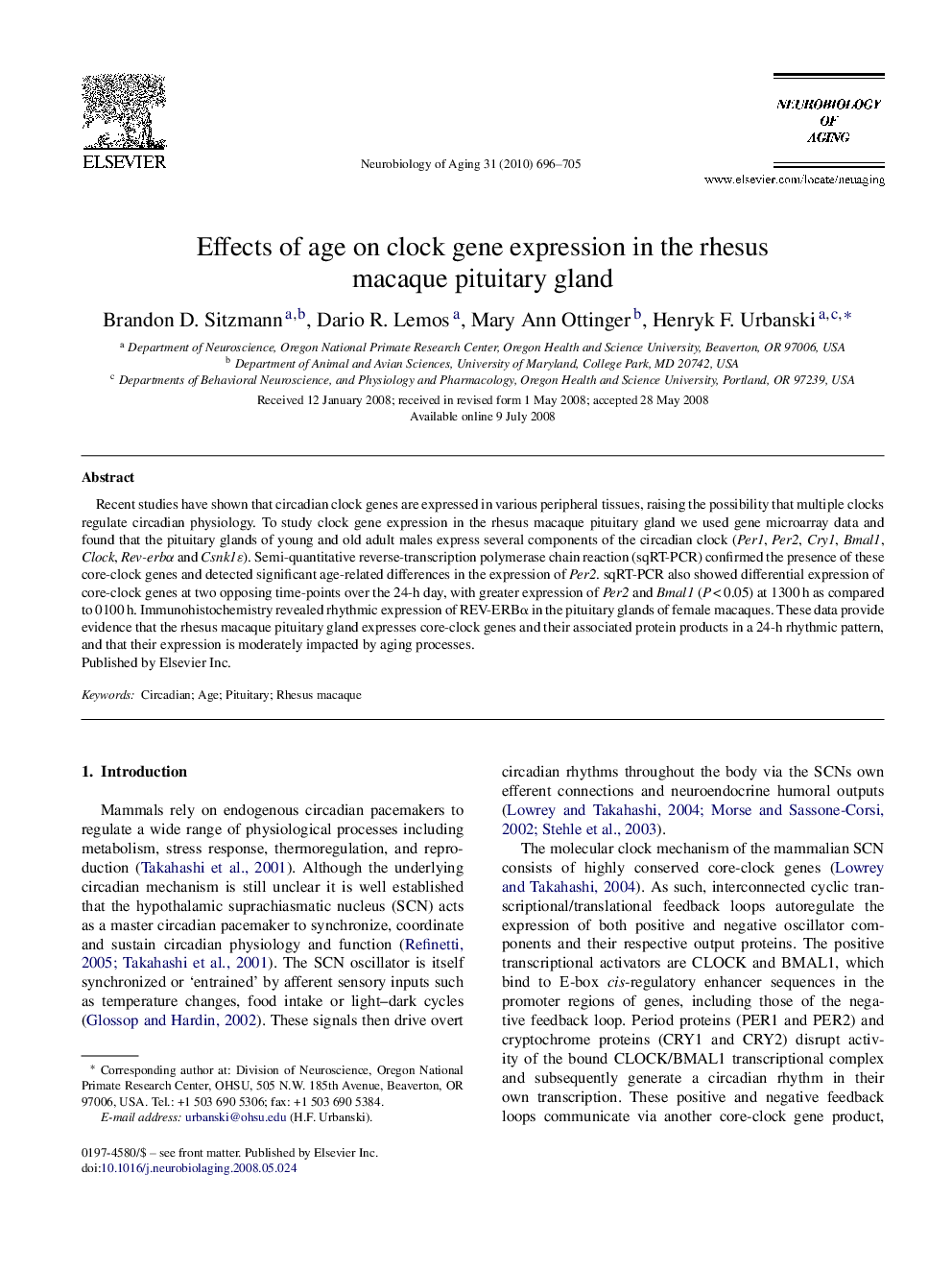| Article ID | Journal | Published Year | Pages | File Type |
|---|---|---|---|---|
| 329375 | Neurobiology of Aging | 2010 | 10 Pages |
Recent studies have shown that circadian clock genes are expressed in various peripheral tissues, raising the possibility that multiple clocks regulate circadian physiology. To study clock gene expression in the rhesus macaque pituitary gland we used gene microarray data and found that the pituitary glands of young and old adult males express several components of the circadian clock (Per1, Per2, Cry1, Bmal1, Clock, Rev-erbα and Csnk1ɛ). Semi-quantitative reverse-transcription polymerase chain reaction (sqRT-PCR) confirmed the presence of these core-clock genes and detected significant age-related differences in the expression of Per2. sqRT-PCR also showed differential expression of core-clock genes at two opposing time-points over the 24-h day, with greater expression of Per2 and Bmal1 (P < 0.05) at 1300 h as compared to 0100 h. Immunohistochemistry revealed rhythmic expression of REV-ERBα in the pituitary glands of female macaques. These data provide evidence that the rhesus macaque pituitary gland expresses core-clock genes and their associated protein products in a 24-h rhythmic pattern, and that their expression is moderately impacted by aging processes.
